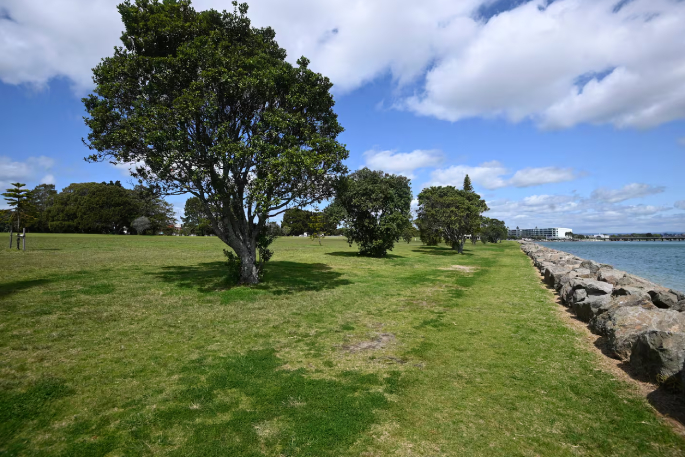A state-of-the-art marine research and education facility will be established at Sulphur Point in Tauranga after years of controversy surrounding the future of the site.
Tauranga City Council and the University of Waikato today announced their agreement to lease a site at Marine Park to establish the new facility.
The tender process for leasing the land was completed in March last year with the council receiving only one tender.
The announcement comes after community protests, including a petition to “Save Marine Park” from people concerned the green-space reserve would be lost forever.
It also follows council efforts to revoke the park’s reserve status in 2018 that was blocked by then Conservation Minister Eugenie Sage in July 2020.
Through its tender, the university had demonstrated the capability to establish and operate such a facility, the council says in a statement.
Negotiations with the university began in April last year, finishing in June this year.
In the statement, the council says Marine Park was an ideal site for the new facility because it was on the edge of Tauranga Harbour and “offered access to a diverse range of marine environments”.
The new facility will replace the university’s Coastal Marine Field Station and include research laboratories, classrooms, and public engagement spaces.
 The council says Marine Park is an ideal site for the new facility. Photo / George Novak.
The council says Marine Park is an ideal site for the new facility. Photo / George Novak.
It will be equipped with the latest technology to enable innovative research and education in marine science, conservation, and sustainability, complementing the university’s Durham St campus and Mount Maunganui Adams Centre, the statement says.
Council chairwoman Anne Tolley says in the statement this was a chance for the city to assert its position as a leader in marine research and education and the facility represented “huge opportunities” for Tauranga, global research and “future generations of New Zealand”.
University vice-chancellor Professor Neil Quigley says in the statement the facility would put the Bay of Plenty on the global stage for marine science.
University marine scientist Professor Chris Battershill says the unique marine environments around the Bay of Plenty region made the location of the new facility a “nationally and naturally significant base to examine resilience in our increasingly stressed marine estate while identifying advances for our blue economy”.
“Tauranga is uniquely placed to foster the education and research of different marine environments.
“This will be the only facility in New Zealand, and perhaps the world, with access to almost all marine habitats on its doorstep — from catchments, beaches and lakes to Whakaari/White Island and the largest working harbour in the country,” Chris says.
“This new facility will enable us to learn critical ways to protect our marine life by making the invisible visible, so we can continue to enjoy our special connection with the water.”
 University of Waikato's Professor Chris Battershill. Photo / Alex Cairns.
University of Waikato's Professor Chris Battershill. Photo / Alex Cairns.
Priority One chief executive Nigel Tutt says in the statement there were huge opportunities in New Zealand marine sciences, biotechnologies and aquaculture.
“The new facility at Marine Park will provide access to the world-class expertise needed to push this forward; helping our country to develop exciting new export sectors and providing us with excellent environmental research.”
Tauranga MP Sam Uffindell says in the statement the new facility was another exciting step forward for Tauranga, and would help bring higher-skilled and better-paid jobs to the city.
“This exciting collaboration between the University of Waikato and Tauranga City Council will help develop Tauranga as a leading hub in aquaculture and biotech.
Tauranga man Neil Pollett has previously led opposition to development at the park, saying it was a green-space reserve the city will “never get back”.
“I’m just concerned for the future of the city that [the council is] promoting high growth in the Te Papa peninsula and are simultaneously removing any green space and any public space that people can enjoy,” Neil says at the time.
There were other places in the city the university could go, Neil says.
The university will now progress with funding and design, and obtaining the necessary consents required to build the facility.
It is anticipated it will be open in 2027-28.



0 comments
Leave a Comment
You must be logged in to make a comment.